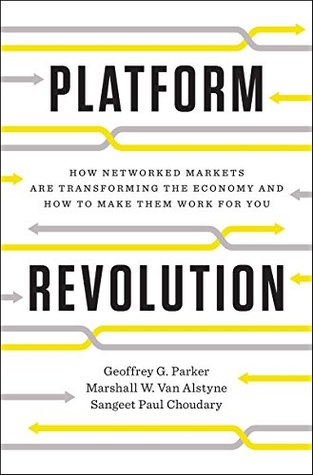More on this book
Community
Kindle Notes & Highlights
Read between
August 7 - August 9, 2016
The issue is to embed into the platform multiple independent solutions to the same problem. Then this becomes common for everyone else. It’s a question of timing. If you do it right away, your ecosystem is scared that you’ll cannibalize their cash cows. If one provider builds a particular functionality, you don’t want to co-opt it. But if a whole slew of them have [developed the same capability], then competition reduces benefits anyway, and you can fold it in.
At one time, oDesk (now known as Upwork) had so many metrics (measuring job postings, registered workers, service variety, and many other factors) that one board member complained, “You’re over-measured and under-prioritized.”
Instead, Ries suggests, “you should make sure your metrics meet the ‘3 A’s test’ where your metrics are actionable, accessible, and auditable.”
In this model, the firm maximizes profits by avoiding ruinous competition for itself but encouraging it for everyone else in the value chain.
Steve Denning has highlighted the weakness of Porter’s assumption that the purpose of strategy is to avoid competition. Denning pointed instead to management guru Peter Drucker’s dictum that the purpose of business is “to create a customer.” According to Denning, in a world where sustainable advantage is an illusion, a company’s relationships with customers are its only lasting source of value.
Within the ecosystem, the lead firm negotiates dynamic tradeoffs involving competition at three levels: platform against platform, platform against partner, and partner against partner.
Limiting multihoming is a cardinal competitive tactic for platforms.
Classic merger and acquisition (M & A) strategy suggests that business leaders should pursue targets that either add complementary products or market access or subtract supply chain costs.
This solves the traditional challenge of information asymmetry in M & A evaluation. Instead of basing a buy decision on someone else’s audited financial data, the purchaser can rely on firsthand observation of transaction data and even run real-world experiments to test various strategic scenarios. Managing a platform lets you take the partnership for a test drive before signing a purchase agreement.
HOW PLATFORMS COMPETE (5): PLATFORM ENVELOPMENT Platform managers need to continually scan the horizon, observing the activities of other platforms—particularly platforms that serve similar or overlapping user bases. We call these adjacent platforms. When a new feature appears on an adjacent platform, it may represent a competitive threat, since there’s a possibility that users of your platform may find the new feature attractive enough to begin multihoming or even to abandon your platform altogether. To respond, the platform manager can choose either to provide a similar feature directly or
...more
Both higher multihoming costs and higher switching costs tend to push a market toward higher concentration, dominated by fewer, larger companies.
In the world of platforms, competition becomes less important that cooperation and co-creation. Control of relationships becomes more important than control of resources.
Among the methods that platforms use to compete with one another are preventing multihoming by limiting platform access; fostering innovation, then capturing its value; leveraging the value of information; nurturing partnerships rather than pursuing mergers and acquisitions; platform envelopment; and enhanced platform design. Winner-take-all
Thanks to regulatory capture, government rules are often used to block competition and thwart innovation rather than to protect consumers and benefit society.
Our analysis shows that in fact firms with strong two-sided network externalities can maximize profit even when they distribute services to one side of the market at a price of zero.
Duolingo separates language teaching from traditional educational institutions. The same thing is happening with the teaching of programming on TopCoder, marketing on Salesforce, or guitar on Microsoft Xbox.


